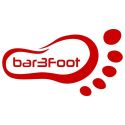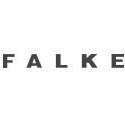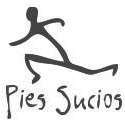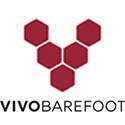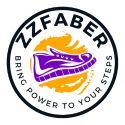No products
Prices are Management included
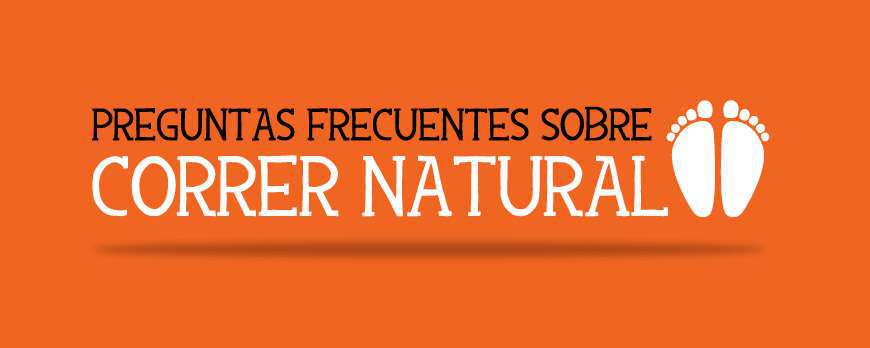
Still doubt? Frequently Asked Questions to Start Running Minimalist
Although minimalist running, naturally or barefoot, is increasingly implanted and consolidated, there continue to be many doubts and questions, sometimes the result of the dis-information in the network. With this article we want to answer the most frequently asked questions of runners who are approaching natural technique for the first time, and at the same time we encourage you to ask your own questions and answers. Between all we will get that it is spoken of the minimalism with foundation.
Why is minimalist running less aggressive with my joints?
Easy. Simply because with a correct technique every part of the body does the work for which it is designed. No more no less. Optimal operation.
When we run barefoot, although we do not have a perfect running technique, we usually meet a number of requirements without which we could not run without anything on our feet: knees bent, landing close to the center of gravity of the body (hips) and near cadence At 180 steps / minutes. All this allows the wonderful shock absorber of our body - the one formed by foot, ankle, knee, hip - to act and that the joints do not suffer regardless of the type of athlete that we are.
Do hard surfaces affect?
Not at all. Our sensory system is able to adjust the natural shock absorber of our legs to adapt properly to the surface. Compare the spring that forms the ankle-knee-hip joint with the 2 or 3 centimeters of rubber from the cushioning of a shoe. Just release your feet and run minimalistic to make everything work properly.
Is it recommendable to everyone?
Suddenly the answer is yes (*), anyone who can perform a physical activity can - and must - run with natural technique. That is, there are no limitations by weight, age or sex of the athlete. We are all born with a perfect biomechanics that sometimes we lose and sometimes we do not develop it correctly. What happens is that until now we had been sold that our biomechanics is imperfect and that in order to run we need a series of palliatives without which we are more likely to injure ourselves, whether they are templates or shoes with all kinds of control systems, cushioning, etc.
(*) Provided that you do not have any serious problems in joints, musculature, etc. It is also not recommended to move barefoot or with minimal footwear to those who have decreased foot sensitivity (eg diabetes neuropathy), since they are not able to exploit the sensory apparatus necessary for a natural movement.
I've heard that running naturally loads the twins a lot, does not it?
Running with the natural or minimalist technique does not overload the twins. If this happens to you this can be for two reasons:
- Because you are in the adaptation phase and as in any activity where you begin to use muscles that were not used before they can suffer from stiffness and, if we exceed their capacity of work, overloads.
- Because there are failures in the technique of running, such as an excessive push in the takeoff phase, or an early landing, which causes extra work to the twins that results in overloads. This can happen even when we have been running minimalistic months since it is not a matter of adaptation, but technique.
Is it compulsory to run barefoot or can you achieve a good technique running with sneakers?
It is not compulsory to run barefoot, but it helps (and much) to make everything easier.
The sensitivity of the foot is very important to awaken the reflex movements of our motor mechanism, and the less interference the information reaches the sensory apparatus of the foot, the better the response of the motor mechanism. In this way we will instinctively do, through reflex acts, the gestures that lead us to a good technique. With sneakers we are 'dimming' that reflex response and we will have to put more of our conscious part to get the same result, hindering and lengthening the process. And obviously, the greater the damping of the shoe, the greater the 'damping' of the reflex response.
In short, although running barefoot is not our goal, we must bear in mind that it is the best tool we have to improve the career technique. And failing that, use the most minimal shoes we have. The less damping and / or better protection.
What happens to dirt / crystals / soil syringes?
The truth is that the soil of cities and towns is dirty (usually from cars), but not much less planted with crystals or syringes, that is, the chances of finding a sharp element are small, and in the case That we find it, our body has several devices to avoid hurting us.
First, the sense of sight develops a kind of radar that allows us to see things that we did not see before, and if we accidentally step on a stone, a sharp element or similar, we have all our sensory apparatus that will change the supports and raise The foot quickly and instinctively, leaving everything in a possible woe! And in mild discomfort.
Even so, it is advisable to limit the risk of encountering an undesirable element, using places where we know that it will be more difficult to find such objects: a bike lane, a park, a promenade and an athletics track. And for dirt, water and soap :-)
Will you call me running barefoot?
No. Calluses are a product of the friction and pressure exerted by the shoes on the foot. If you eliminate the shoes, you eliminate the source of the problem. A basis of running barefoot the only noticeable change in the skin of the feet is a little thickening in the dermis of the plant, but nothing like a callus. No hardness or harsh skins. Nothing unsightly or stupid.
How long will it take me to adapt?
The time of adaptation depends on several factors. Each runner is a world, and each one has goals. We already know that the adaptation has to be done gradually, starting with very little mileage and increasing progressively. Generally it is considered that the adaptation is completed when the rider is able to comfortably make with minimalist technique the same distance and times that he did with his previous technique. This adaptation usually lasts between two and four months, according to the corridor and the plan that follows.
However this does not mean that the process is finished. This beginning has only opened the door to constant improvement. Once you have confidence and ease, it is time to pay attention to how the body behaves and refine the technique. This process, as in any other sport, takes much longer. It really does not end, just like a tennis player always practices his strokes or a basketball player his shots, a runner should never leave the technique aside.
Are the intermediate minimalist shoes recommended?
If you are not injured and want to change to a more natural running technique, these types of sneakers can be used in the transition to make the step more gradual, in order to continue to maintain a training load similar to what we were doing.
As always, we advise that in spite of wearing intermediate minimalist sneakers (*), trainings or phases of the same one where barefoot or slippers are introduced as minimal as possible. In this way, we will be able to improve the technique of race of form more efficient and fast to if we only run with intermediate minimalistic sneakers.
(*) Minimalist shoes can be found with more or less minimal features, but all have a greater space for the fingers, light weight and very good flexibility. Then you have to take into account the protection, drop and if it provides some reinforcement. With this in mind, we can speak of minimalist pure shoes if it fulfills all the conditions; intermediates minimalist shoes, when they have drop, extra protection and some reinforcement; And natural running shoes, with less minimal features compared to the intermediate minimalist shoes.
The pulsations I have higher is normal?
During the first few weeks of adaptation it is quite normal, since muscles are being used differently, and some of them were quite untrained and have to be strengthened. This supposes an increase of the consumption of oxygen and the corresponding increase of the pulsations. Once those muscles are sufficiently trained, everything will return to normal.
Does running naturally mean running on the front of the foot?
Running naturally does not mean running with the front of the foot (or metatarsals). The support of the foot on the floor with the front of it should be a consequence of having a good technique, ie, to have a correct motor pattern.
To run the right way you have to forget how your foot lands on the floor, and pay attention to keeping your body aligned, to do short strides without pushing and to be relaxed with your legs, and instead of focusing on how you step, focus In how the foot is collected. Keep this in mind:
Begin to move your foot back before it touches the ground and pick it up as soon as possible.
If you do this, the footprint will be correct without doing anything consciously with your feet.
In order not to run the risk of the first support being with the fingers (tiptoe), do not force the landing with the front of the foot. This should come out practically alone, as a result of having a correct posture and coordinated movements. So negative is to support the heel first as it can become forced landing with the fingers.
Should the stride frequency be 180 steps / min?
But why cadence is so important? For among other physiological issues that are difficult to measure, there are two aspects of elementary physics that can be clearly explained. A stride is divided into a flight phase and a contact phase. At a lower rate, the duration of the stride is greater, and therefore so is the duration of each of the phases. The flight phase itself constitutes what in basic physics is called a 'parabolic shot', with a vertical movement component. This vertical movement consumes an amount of energy and produces an impact against the ground in the fall, and both the energy consumed and the impact force are directly related to the square of the duration of the flight phase. So a reduction in the duration of that flight phase (and therefore an increase in cadence) can drastically decrease the energy expended in the vertical movement and the impact forces against the ground.
That is, a high cadence drastically reduces the impact forces and the energy consumed, two essential aspects for an optimal career. And there is a figure that is repeated as a magic number in all talks about minimalist running: 180 steps per minute. This number has its reason for being. He calculated the famous coach Jack Daniels, measuring the cadence of the corridors of the Olympic games of 1984 (from 800 meters until marathon). He observed that, regardless of the distance of the test, the most common rate was 180 steps per minute, and often even higher.
Like all issues in which the physiology of each one influences, this number does not have to be fixed or valid for the whole world. But it is a good guide to start when you do not have better references. When you are beginning to adopt the natural technique, this number must be a mandatory reference until you acquire the necessary experience to establish your own cadence, which almost certainly will in the end be even greater. It is difficult to find a minimalist runner or an elite runner (both with good technique) with a cadence of less than 180 steps per minute, or at any speed.
But ... even if I go jogging slowly should I have a cadence of 180 ps / min?
Yes, although at first it seems a bit strange, it will come out naturally at once. Short and fast steps. It is the best insurance against injuries and also helps to catch the habit for when running at higher speeds.
Do I have to lean forward when I run?
A slight forward incline when running puts the body in an optimal posture to take advantage of the forces generated against the ground. However, a poorly executed inclination introduces tensions and imbalances that can be very damaging, both from the point of view of performance and from the point of view of injuries.
At the beginning of the transition to natural technique it is best to forget about the inclination, since it has more disadvantages than advantages until the other aspects of the technique are not mastered. Just run with your body aligned and upright until you gain the experience you need to be able to afford to experiment with tilt. The correct inclination is born from the ankles, keeping the body perfectly aligned, without bending at the hip. Bend on the hip when running is bad for our body.
There are different methods, what should I follow?
There are some methods (eg Pose, Chi, Evolution) that are based (some more, some less) on these same principles. They have their part of truth and their part of 'ornaments' to sell the method itself. They are useful in that they allow a series of mental images to be obtained on what one wishes to achieve, although some concepts distort them in order to have their parcel of differentiating exclusivity.
In the end we have to keep in mind that the best teacher are our feet, and if we are willing to release them running barefoot and wearing really minimalist footwear, no method is necessary. Just inform yourself well and make a gradual and head-on transition.
Dejar un ComentarioDejar una respuesta
Blog categories
- Running Technique
- Shoes Review
- Scientific studies
- Nike and minimalist shoes
- Morton neuroma
- Bunions
- Podiatrists' opinion on...
- Claw toes, crowded toes,...
- Flat feet
- Runner's injuries, runner's...
- Sprained feet, ankle sprains
- Footwear for wide feet or...
- Heel and back pain
- Children's feet and...
- Circulation and bone...
- Knee pain, osteoarthritis,...
- Plantar fasciitis
Últimos Comentarios
Fernando Capellán
That Vivobarefoot lawsuit… and what happened nextLorena Cortés
This is what Nike did to Nadal's footFernando Capellán
They call it ugly... but everyone will...Antonio Caballo
The finger wristband: when fashion squeezes...

